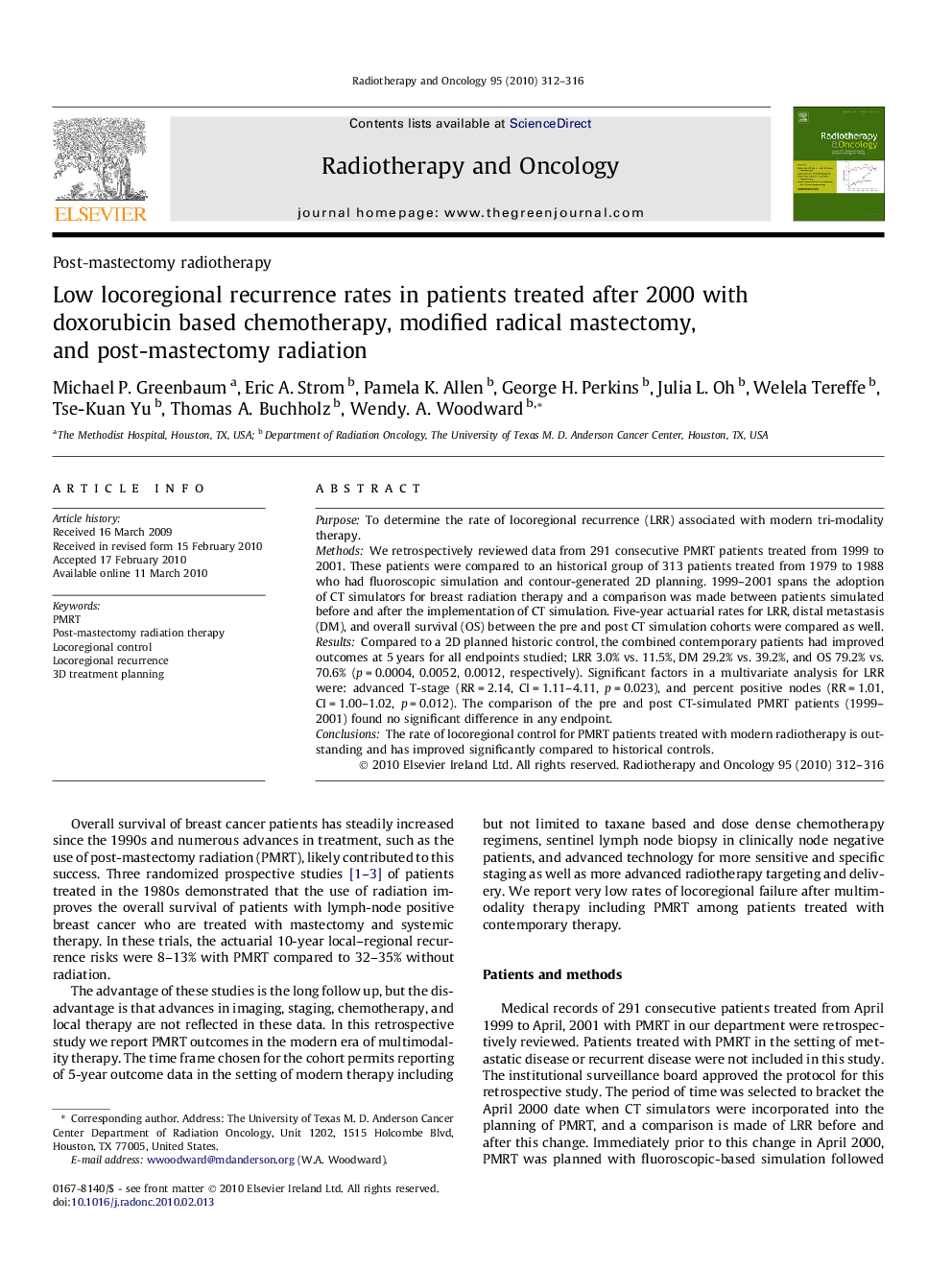| Article ID | Journal | Published Year | Pages | File Type |
|---|---|---|---|---|
| 2158946 | Radiotherapy and Oncology | 2010 | 5 Pages |
PurposeTo determine the rate of locoregional recurrence (LRR) associated with modern tri-modality therapy.MethodsWe retrospectively reviewed data from 291 consecutive PMRT patients treated from 1999 to 2001. These patients were compared to an historical group of 313 patients treated from 1979 to 1988 who had fluoroscopic simulation and contour-generated 2D planning. 1999–2001 spans the adoption of CT simulators for breast radiation therapy and a comparison was made between patients simulated before and after the implementation of CT simulation. Five-year actuarial rates for LRR, distal metastasis (DM), and overall survival (OS) between the pre and post CT simulation cohorts were compared as well.ResultsCompared to a 2D planned historic control, the combined contemporary patients had improved outcomes at 5 years for all endpoints studied; LRR 3.0% vs. 11.5%, DM 29.2% vs. 39.2%, and OS 79.2% vs. 70.6% (p = 0.0004, 0.0052, 0.0012, respectively). Significant factors in a multivariate analysis for LRR were: advanced T-stage (RR = 2.14, CI = 1.11–4.11, p = 0.023), and percent positive nodes (RR = 1.01, CI = 1.00–1.02, p = 0.012). The comparison of the pre and post CT-simulated PMRT patients (1999–2001) found no significant difference in any endpoint.ConclusionsThe rate of locoregional control for PMRT patients treated with modern radiotherapy is outstanding and has improved significantly compared to historical controls.
